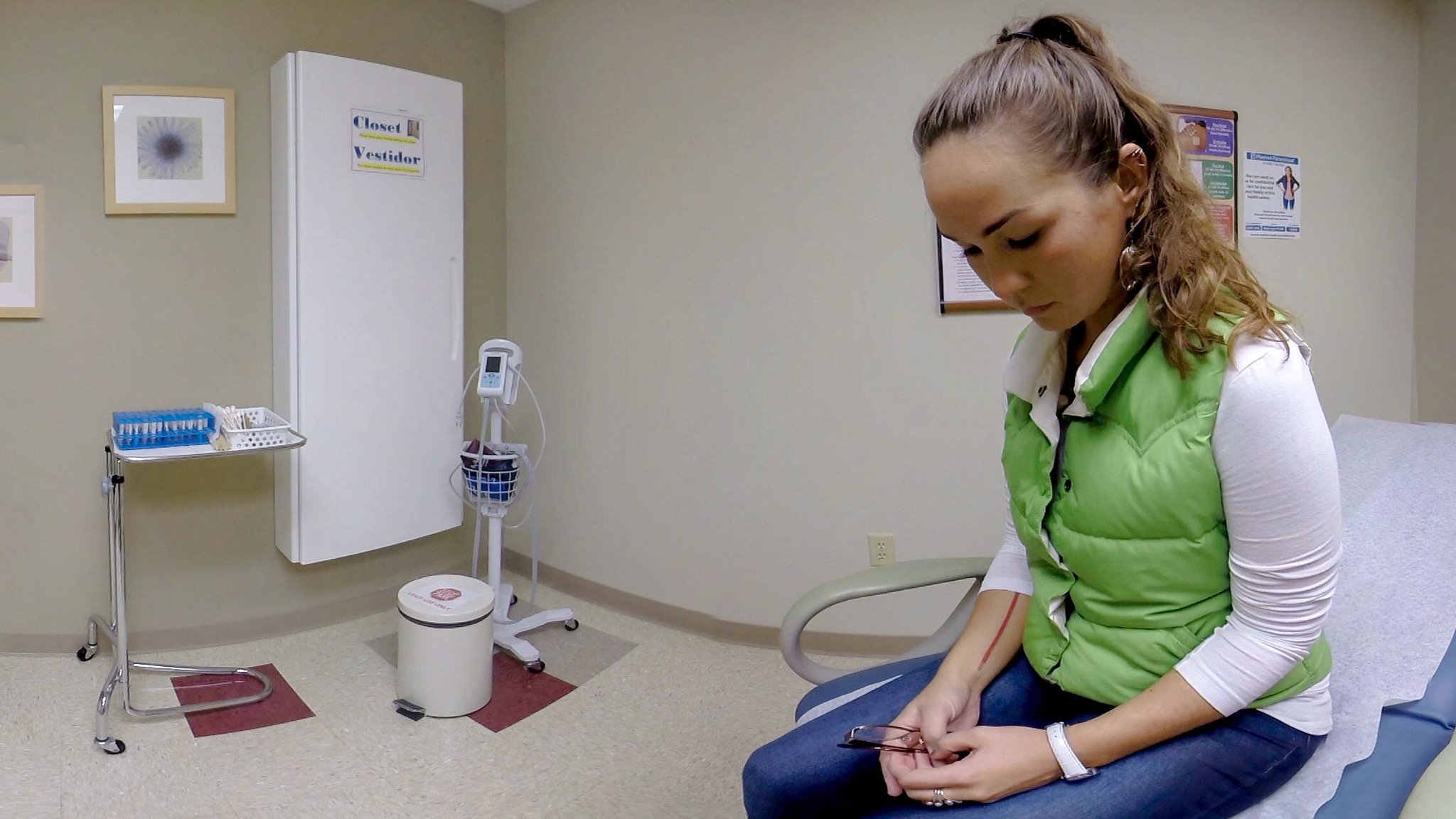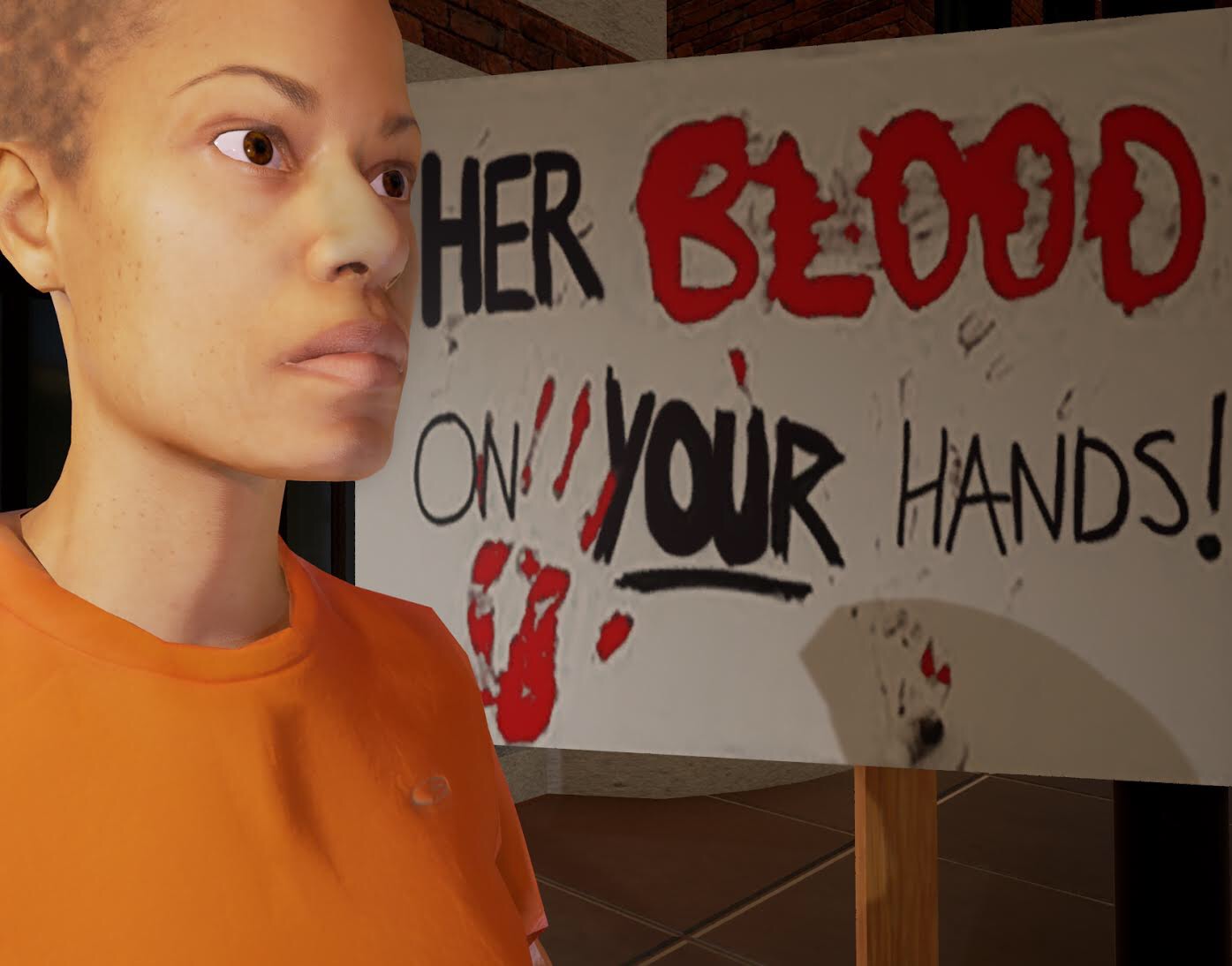There’s an iconic scene in Blade Runner where Harrison Ford’s character Deckard meets the replicant Rachel for the first time, but he doesn’t know she’s not human. He then uses a test called Voight-Kampff to determine whether or not she’s a real person. The test consists of a series of questions designed to elicit emotion. The idea – which is beautifully challenged later on in the film – is that machines are incapable of such empathetic responses.
Empathy, in other words, is what makes us human.
With an emerging consensus that the immersive nature of VR is particularly effective in triggering those empathetic responses, we’re seeing artists throughout the creative industries exploring new possibilities for storytelling – with a purpose. Chris Milk’s UN-Commissioned Clouds Over Sidra showed the plight of refugees through the eyes of a 12-year old Syrian girl, while the National Theatre’s Immersive Storytelling Studio production HOME/AAMIR transported viewers to the infamous Calais ‘Jungle’ camp.
VR can even make people feel more empathetic toward more abstract things like the environment, as was recently shown with the Crystal Reef project – showcased this year at the Tribeca Film Festival by researchers from the Virtual Human Interaction Lab (VHIL) at Stanford. The simulation, where you watched the devastating effects of ocean acidification caused by man, served to connect people to the consequences of their own actions in a much more tangible way.

Journalist and Filmmaker Nonny de la Peña – Co-Founder of the Emblematic Group and affectionately known as the “Godmother of VR” – has long explored the power of Virtual Reality experiences to break through viewer apathy. Her pioneering work often transports viewers into uncomfortable situations – such as a line for food handouts outside a shelter in LA, where you see a man collapsing from hunger next to you – and makes them re-think their outlook on often controversial issues.
The latest of those projects is Across The Line, an experience which tells the story of a young woman going to an abortion clinic. I viewed it recently at London’s Raindance Film Festival – where it was selected for this year’s VR showcase Arcade – and spoke to la Peña and their partners at the Planned Parenthood Federation of America (PPFA) to find out more about how the project developed and what the reaction to it has been like so far.
Across the Line starts off with a 360 video of an examination room where you see a patient of the clinic being comforted by a clinician. The young woman sits quietly in the corner, but is visibly upset. After some coaxing from the doctor she tells her it’s because of what the protesters had been shouting at her as she made her way into the clinic. At that point, the doctor asks for permission to give her a hug, and you get a real sense of how helpless and vulnerable that person is feeling. As with most 360-degree video, your eyes tend to wander around the room sometimes, but mine is constantly drawn back to the lonely figure of this girl sitting on the examination table. Then as the she fidgets nervously my gaze is drawn to the two long red scars on the inside of her wrists. The unspoken story they tell is poignant. This being VR, I feel like I can almost reach out and touch those scars before the scene fades to black.
The experience then takes me back in time a few minutes, to the clinic entrance at the time when that patient is arriving for her appointment. You’re inside the car with her and the friend who’s driving her in, and they’re both nervously trying to find out where to go. There are protesters with placards lining the side of the road, and a man in an official-looking high visibility jacket approaches the car window. They ask him for directions, only to have him forcefully plead with the girl not to go in. They finally drive away with the angry shouts of the crowd echoing all around them.
In the final scene, I land on a computer-generated street, and am suddenly surrounded by angry avatars. They take turns hurling insults and accusations at me, calling me things like “whore” and “jezebel” and pontificating about how abortion amounts to murder. It certainly didn’t leave me with a warm fuzzy feeling as I took off the VR headset. The whole thing only lasted about seven minutes, but at the end of it I was glad to get back to my own reality.
The objective here was to drive home just how distressing those protests can be: “Once we began to research and compile nonfiction footage and audio for this piece, we saw a consistent pattern of intimidation and provocation by protesters,” explains la Peña.
The difficulty they had with portraying that intimidation was that protesters often tended to tone things down and behave better if they knew they were being filmed, and a 360-degree rig is pretty conspicuous to say the least.
The solution Emblematic found was to get their partners at 271 Productions to personally capture audio from protests around the country, and then computer-generate the visuals to match. The result is a blend of factual content and artistry, and gives us a glimpse of the kind of direction VR journalism and documentary filmmaking could take in the future.
“This was the first time we combined 360-degree video with walk-around CG, so it was a challenge at first to create a storyline that tied both elements together. But we had great partners in 371 Productions, and they actually came and embedded in our lab in Santa Monica so we could work really closely with them to ensure the two pieces would fit seamlessly,” says la Peña.
The concept for Across the Line was born from a serendipitous meeting between la Peña and Molly Eagan – Vice President of the PPFA – at the Sundance film festival last year. The PPFA had done awareness films in the past and were interested to find out whether VR would have a greater impact in raising public awareness than previous initiatives. Eagan later came on board as Executive Producer for the film, working with la Peña and their partners to ensure that the stories accurately portrayed the experiences of staff and patients on the ground.
They also consulted with Professor Jeremy Bailenson at Stanford’s VHIL on the development of the project, as the goal was also to eventually gather data – both qualitative and quantitative – to give further insight into understanding how VR elicits emotional responses through these experiences.
“Based on initial feedback and interviews with people who experienced Across The Line, we know that people are often inspired to take action immediately after watching the film,” says Eagan.
Those people often wanted to take some concrete step to help, so she tells me that they now have a set of information prepared to share with those who ask, telling them about the various ways in which they can make a difference, such as volunteering as a patient escort, supporting policy initiatives, or making a financial contribution to one of the foundations which provides these services.
Eagan talks of compassion being a key part of the care provided to patients at the clinic where she works, and wants the public to feel a measure of that same compassion toward those women after being immersed in the VR experience. One user told her that the film made her not only understand the patient’s perspective better but even to gain insight into the mindset of the protesters.
“We’ve seen an incredible range of responses,” says la Peña. “From people who have had no experience of a particular situation feeling like they could finally understand it, to people who have been through the ‘real thing’ and are still moved to tears to see it again in VR. We’ve seen strong reactions from men in particular who expressed anger that this sort of thing is happening. It’s amazing how much support we’ve had from people of all walks of life.”
la Peña says it has been sobering to see all the safety precautions that staff at the clinic have to take on a daily basis. But while the risk of backlash and even the threat of violence was something they had to be conscious of in tackling such a controversial subject, she believes this is an important story that needs to be told:“In the past five years, states have enacted 282 abortion restrictions. Last year, Congress voted 18 times for even more restrictions. We knew we had to figure out a way to get people to empathize with the women who endure the harassment that comes with seeking abortion services.”
Initially, Across The Line was only being shown at film festivals, but the experience got such a great response that the PPFA wanted to make it more widely available, so Emblematic worked to render out a version where the whole experience could be seen in 360. They then distributed a number of cardboard headsets at events around the country, to help spread the message even further.
la Peña thinks it’s about time we stopped thinking of VR just in terms of novelty. The power of presence in these virtual environments is a real phenomenon, one that scientists can measure and track. How you leverage that power, however, is something we’re very much still getting our heads around. She’s excited about the possibilities though, and says the empathy vein is something she’ll definitely continue to explore in her work.
Journalists and artists are only going to get better at using this medium to tell stories in a whole new way. And the tools will get cheaper and easier to use, opening up the doors for more and more people to use it.
“We’re still in the very early days of a truly transformative medium,” la Peña said.































